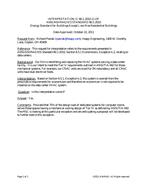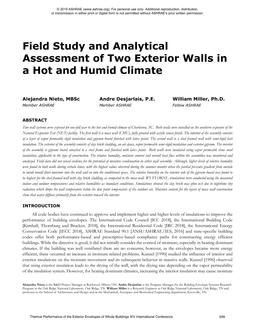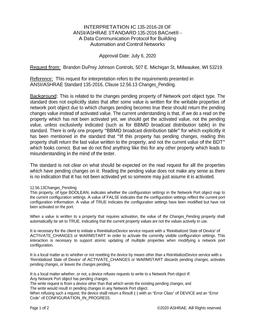Track: Modeling Throughout the Building Life Cycle
Sponsor: 4.10 Indoor Environmental Modeling
Chair: Jinchao Yuan, Ph.D., P.E., Member, University of Idaho, Boise, ID
CFD simulations have long been used in many built environmental designs. However, over the life cycle of the facilities, time-evolving changes can occur in occupied schedules, functionality and the surrounding environment. How CFD simulations cope with these changes becomes critical. In this session, three representative CFD simulation studies throughout the facilities life cycle are presented: 1) commercial data center energy usage and thermal resilience optimization as operation needs evolve over time 2) industrial airplane manufacturing facility ventilation effective code compliance with re-purposed functionality and 3) urban train station infrastructure ventilation revaluation brought by continuously surrounding urban development over the years.
1. Is a Reactive Approach to Data Center Overheating Sufficient?
Mark Seymour, CEng, Member, Future Facilities Ltd, London, United Kingdom
CFD modelling is commonly used for data center design and trouble-shooting. However, the common approach to management is to install IT within conceptual design guidelines until there are thermal alarms. These alarms often arrive before reaching capacity. A common consequence is that alarms result in caution, and further equipment is not installed. Before that, some installation requests may be denied because they are above the design power density. This seminar illustrates how an immediate ‘No’ becomes ‘May-be’ which, when analyzed using CFD becomes ‘Yes’, ‘No’ or ‘How about…’. The potential result – a high capacity resilient and efficient design.
2. Design Considerations for Occupational Health When Large Maintenance Facilities Are Repurposed for AircraftPainting
James Bennett, Ph.D., Member, CDC/NIOSH, Cincinnati, OH
Reducing exposures of aircraft painters to hazardous metals and organics motivates design and operation of hangar ventilation systems in purpose-built facilities. Field studies have shown that facilities are often repurposed for aircraft painting, even when the ventilation system has been designed for thermal comfort or general dilution. Contaminant exposures under cross-flow, ceiling diffuser, and hybrid ventilation configurations were evaluated. Occupational Safety and Health Administration (OSHA) regulations require 100 fpm (0.508 m/s) through spray booths/rooms, and this condition is difficult to achieve with most ceiling diffuser installations. Cross-flow designs provided lower contaminant exposures, with decreased residence times and efficient flow paths.
3. CFD Modeling to Support City Building Re-Development
Duncan Phyfe, Associate Member, ARL, Alden, MA
The Boston skyline has changed over the years since its first settling. The changes continue today. This seminar looks specifically at the Boston South Station overbuild project, in which a high rise will be placed over a large portion of the presently open train station. This effort has been in development since the 1990’s, long enough to see the evolution of CFD tools. The original physical models have been replaced with more flexible CFD models to ensure the pollutant levels in the overbuild remain within limits. Today, CFD is being used to finalize the design of the station.
Presented: Tuesday, January 23, 2018, 1:30 PM-3:00 PM
Run Time: 90 min.
This is a zip file that consists of PowerPoint slides synchronized with the audio-recording of the speaker (recorded presentation), PDF files of the slides, and audio only (mp3) for each presentation.
Citation: ASHRAE Seminar Recordings, 2018 Winter Conference, Chicago, IL
Product Details
- Published:
- 2018
- Units of Measure:
- Dual
- File Size:
- 1 file , 110 MB
- Product Code(s):
- D-CH18Sem46


